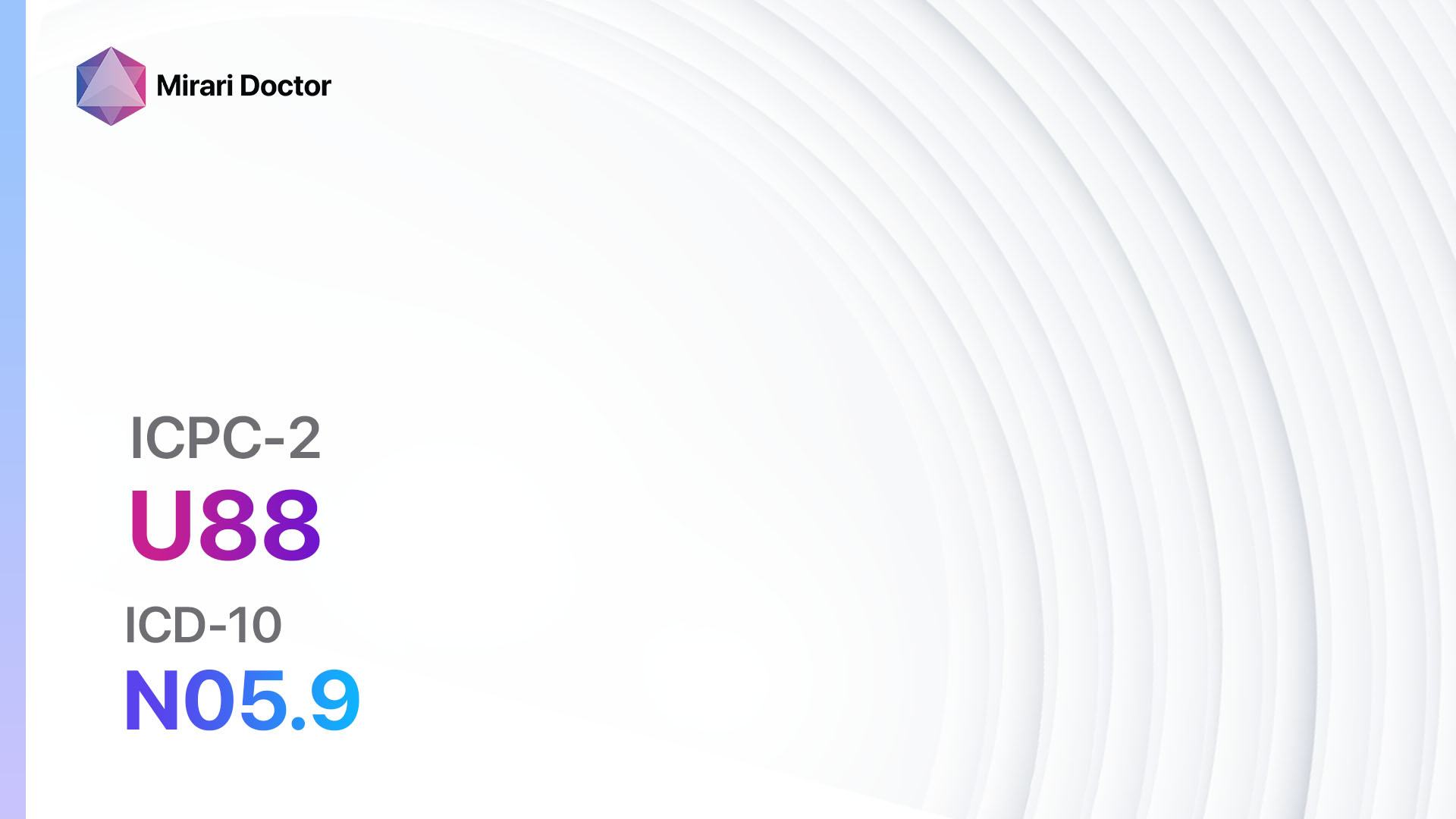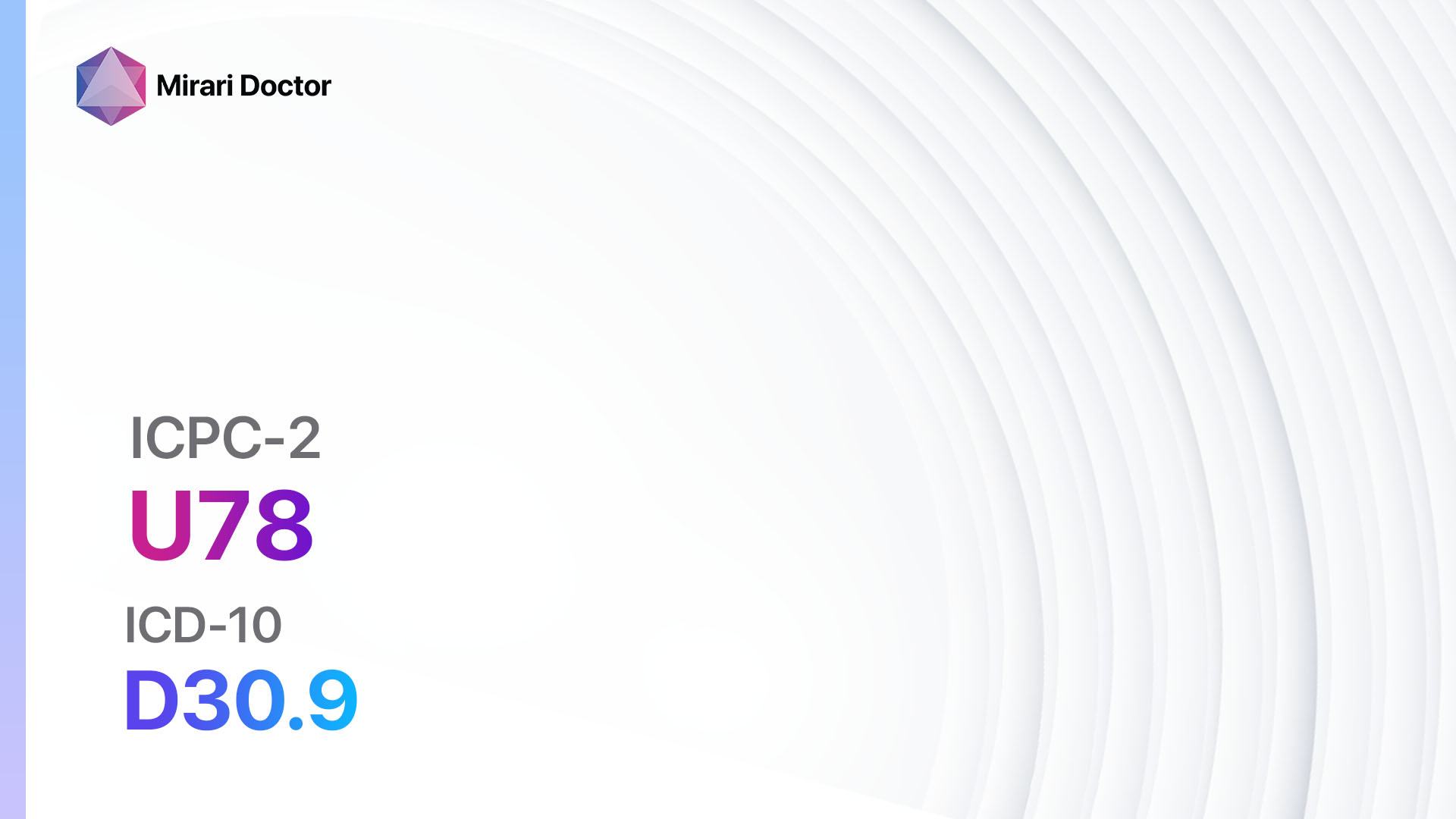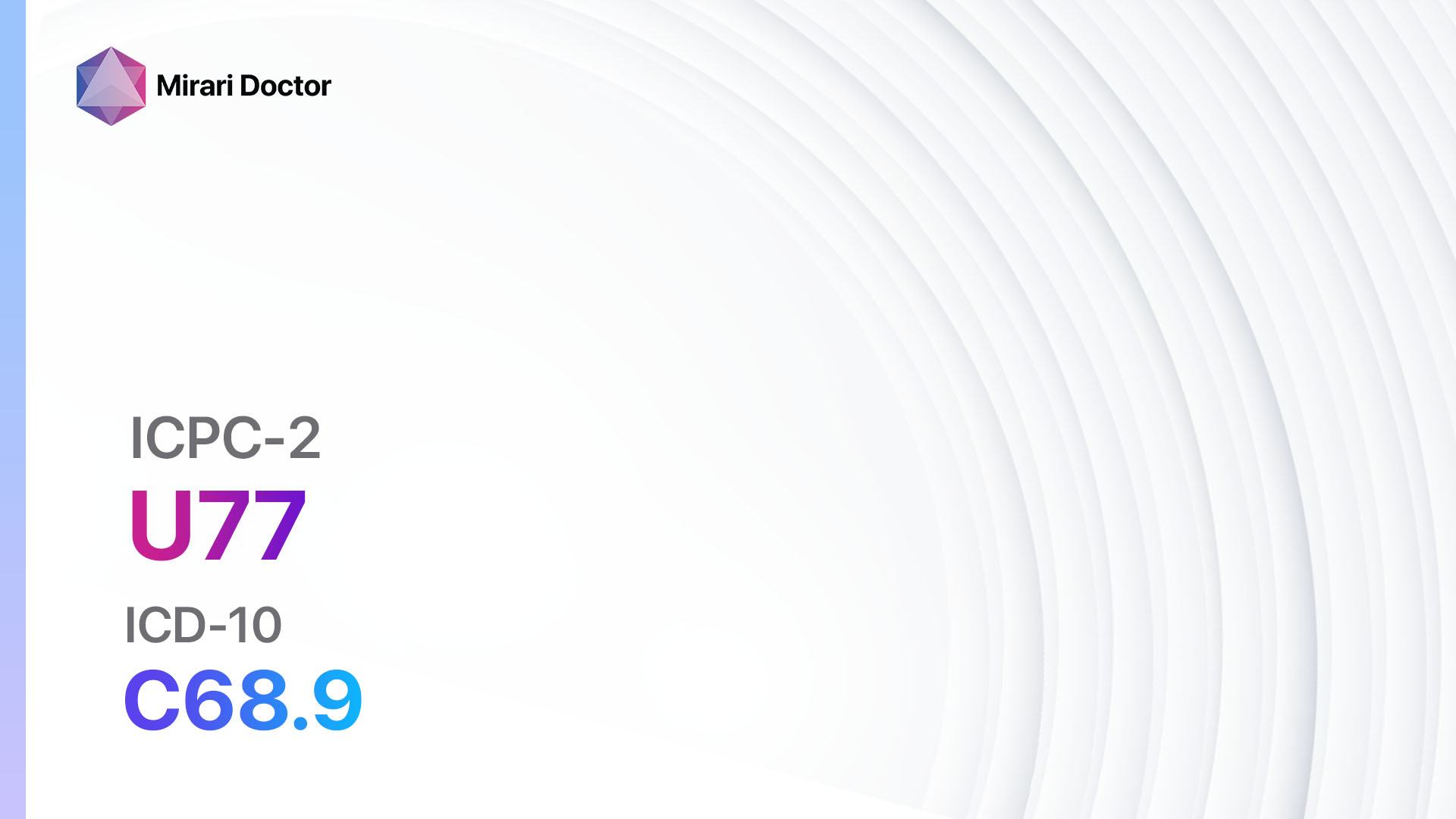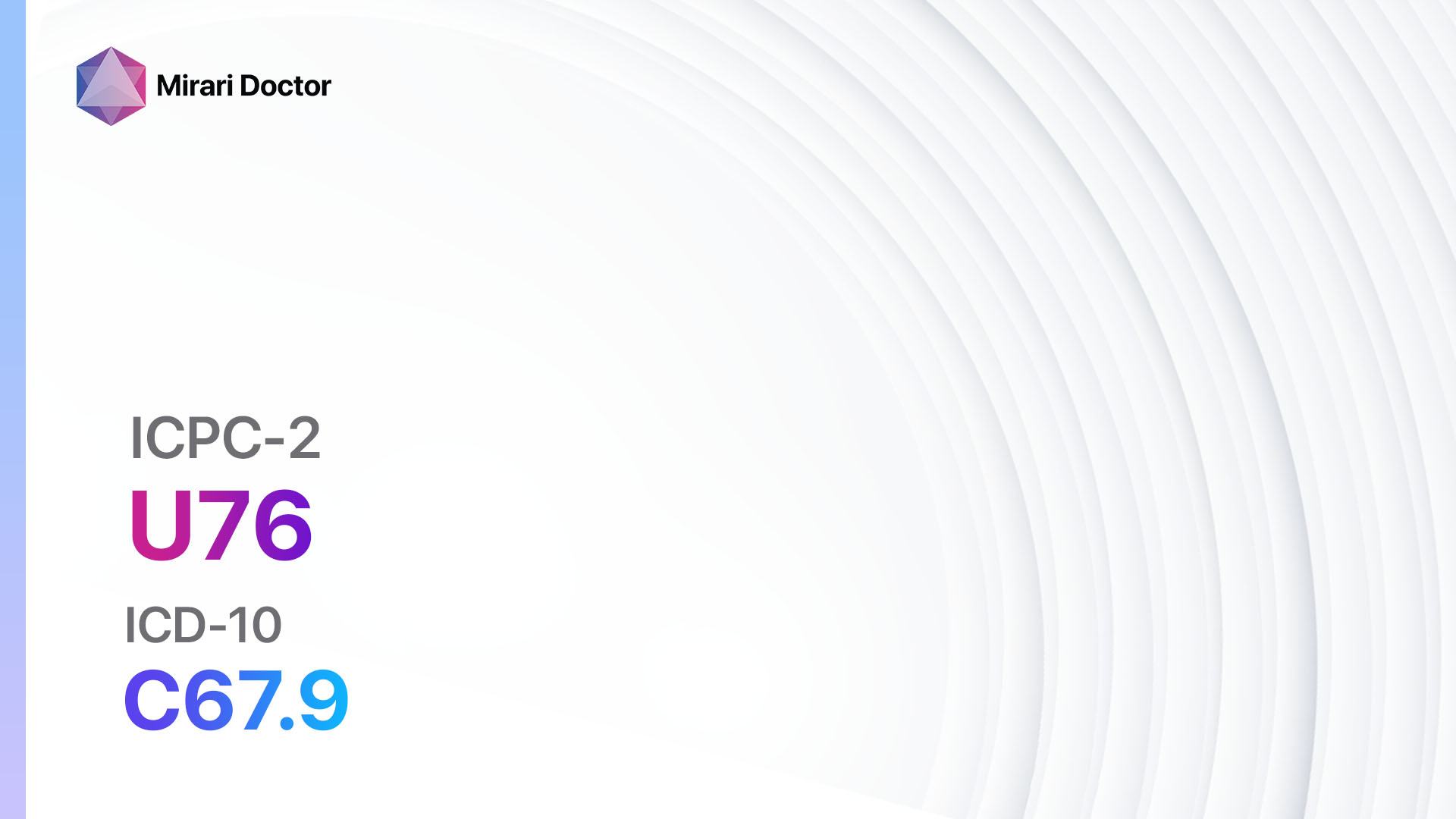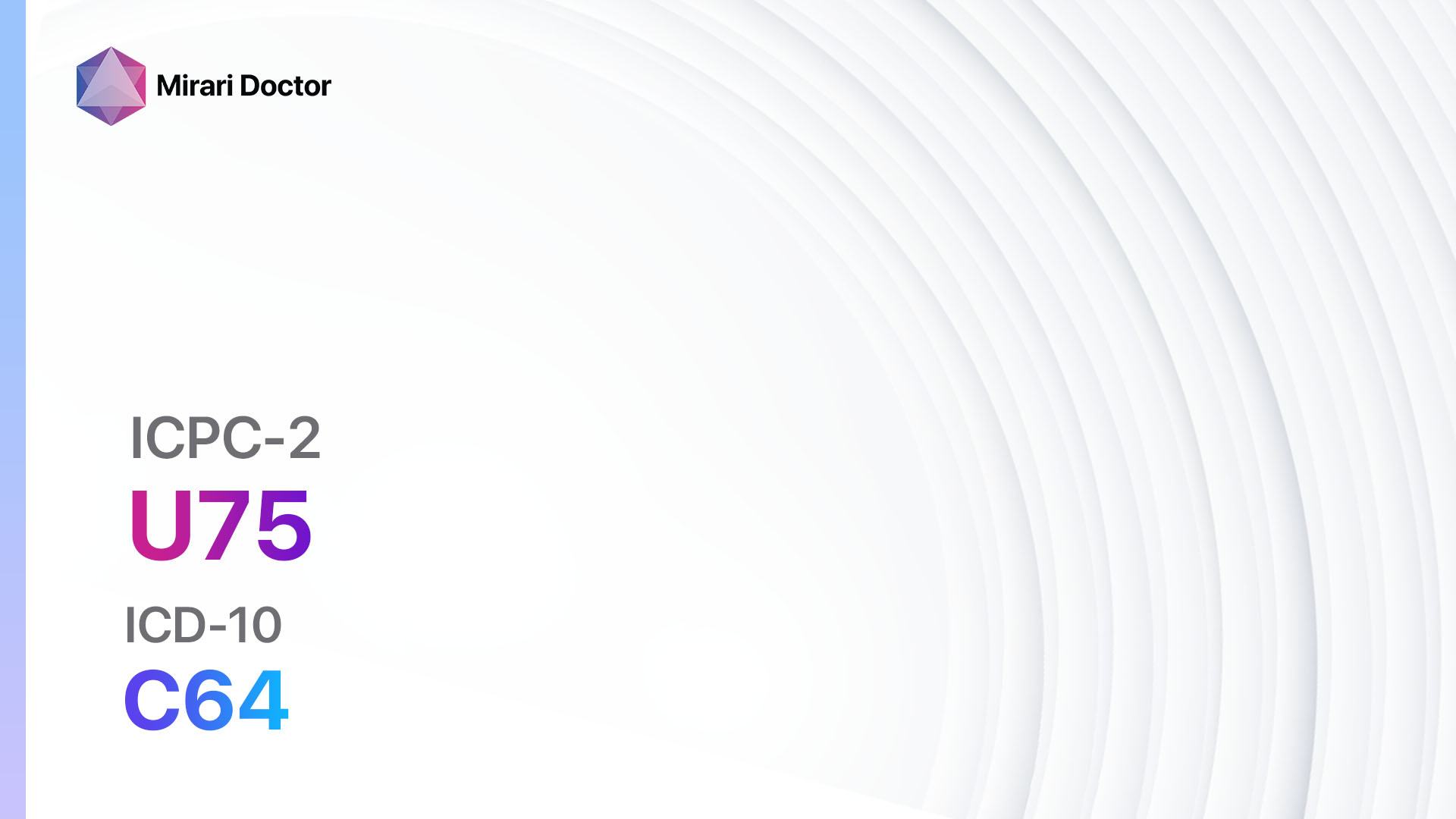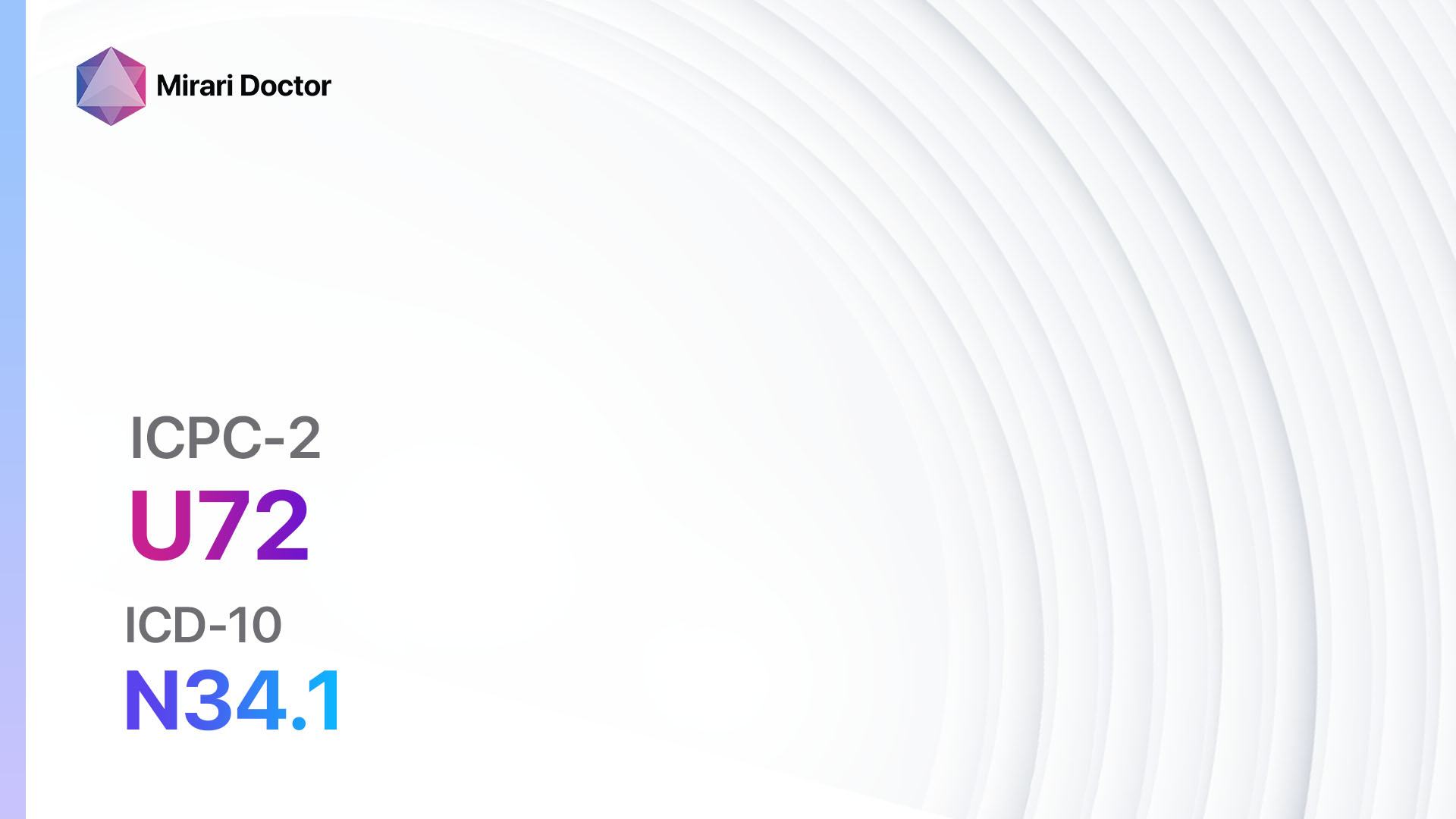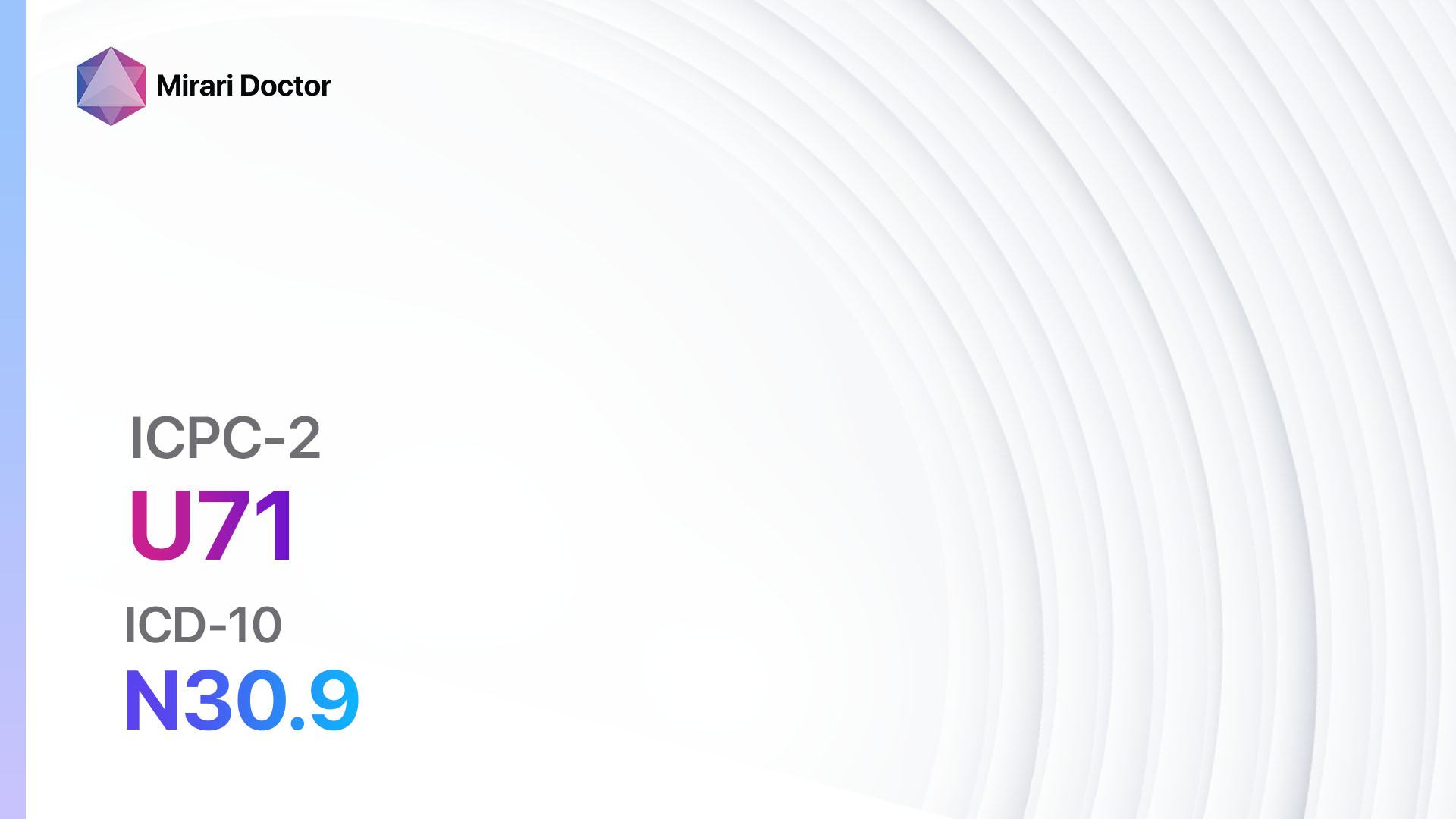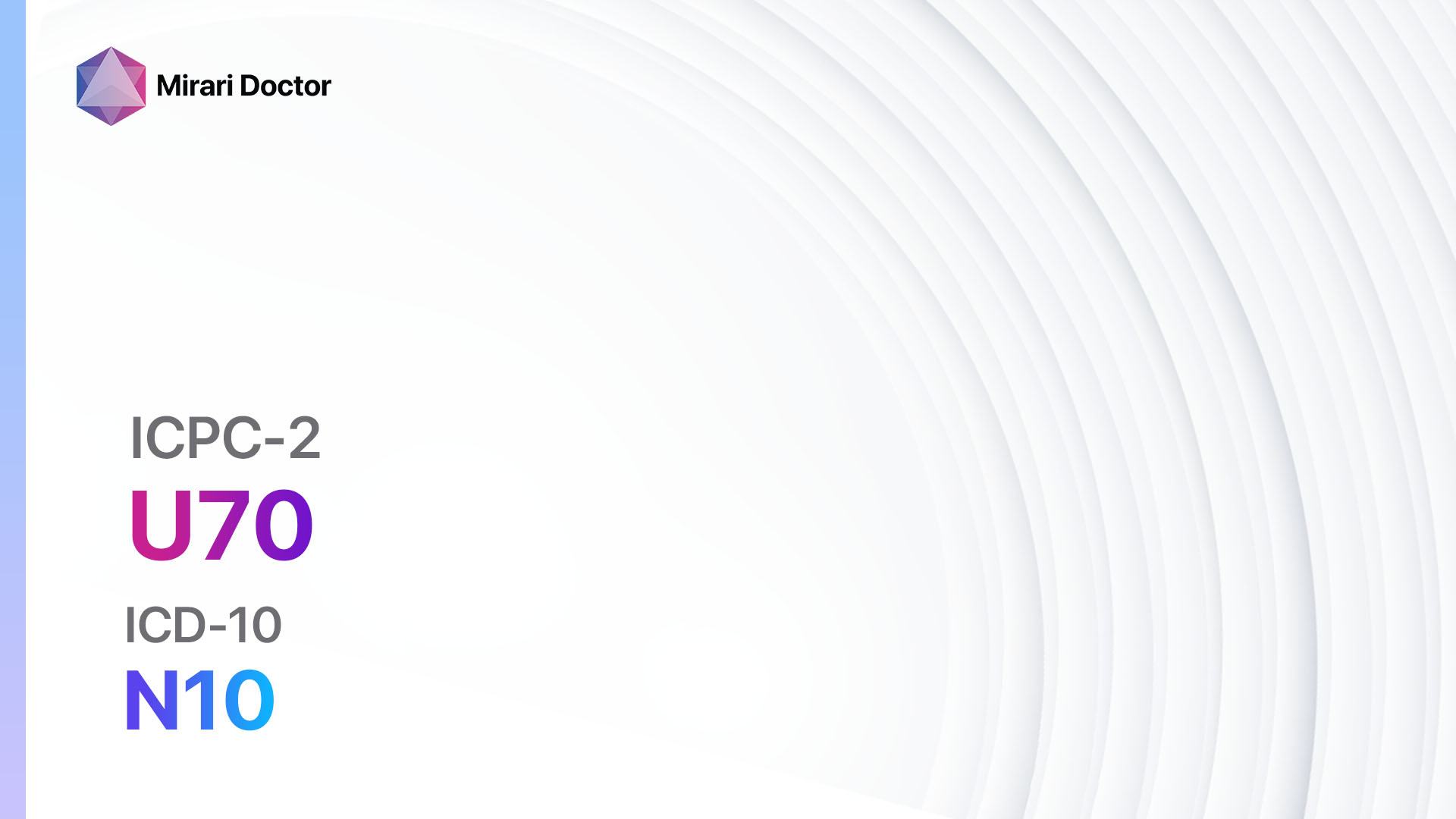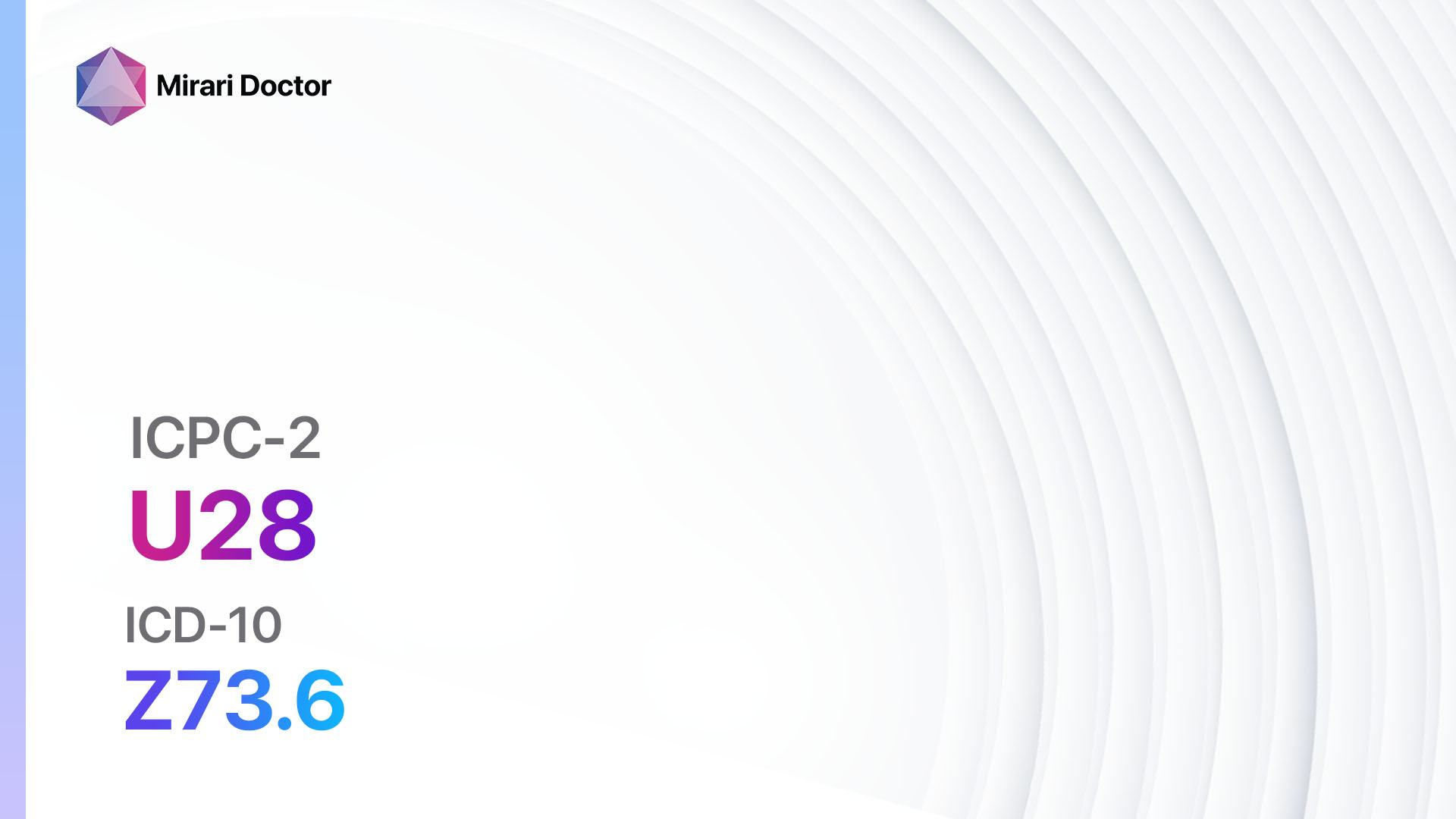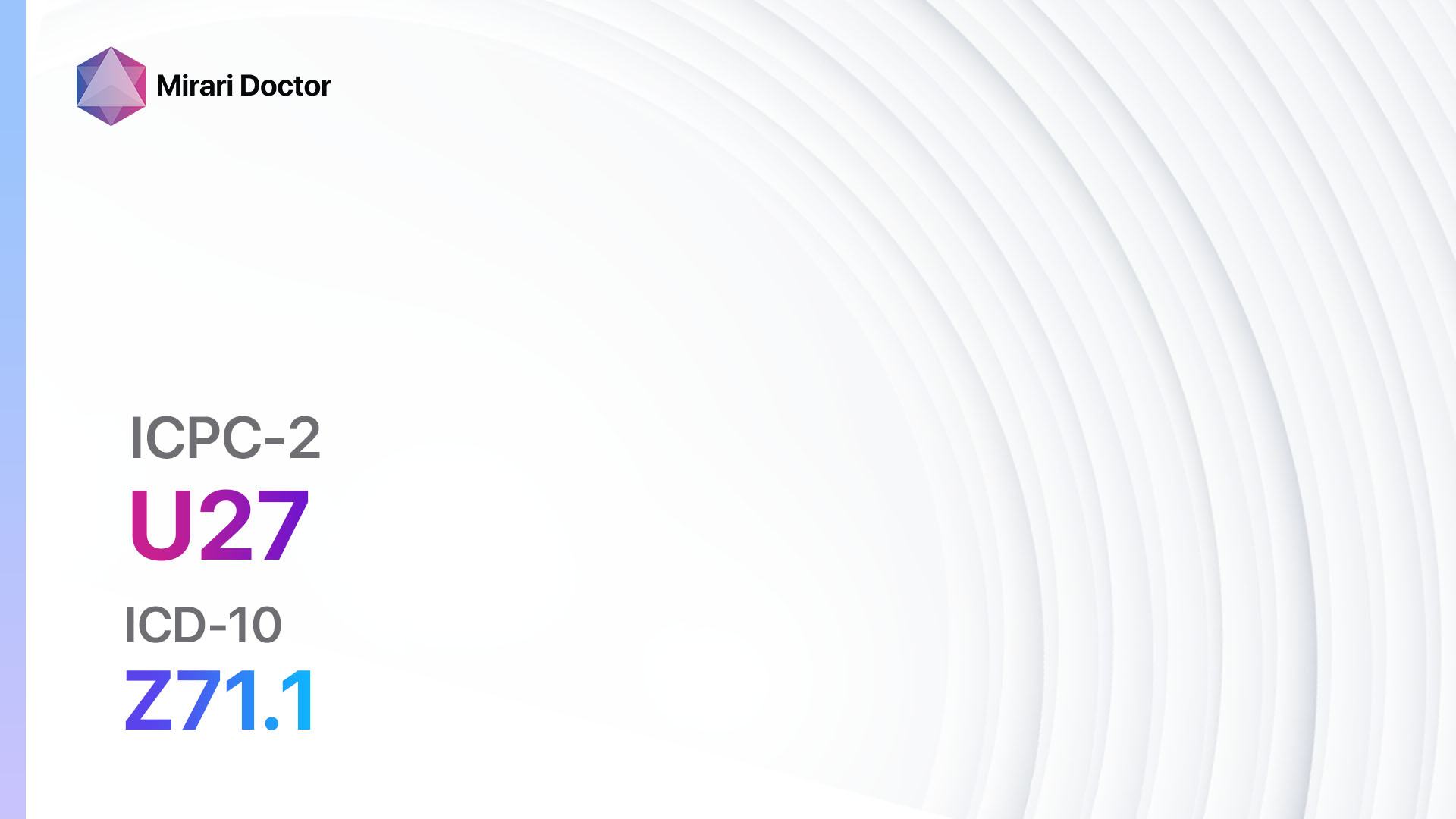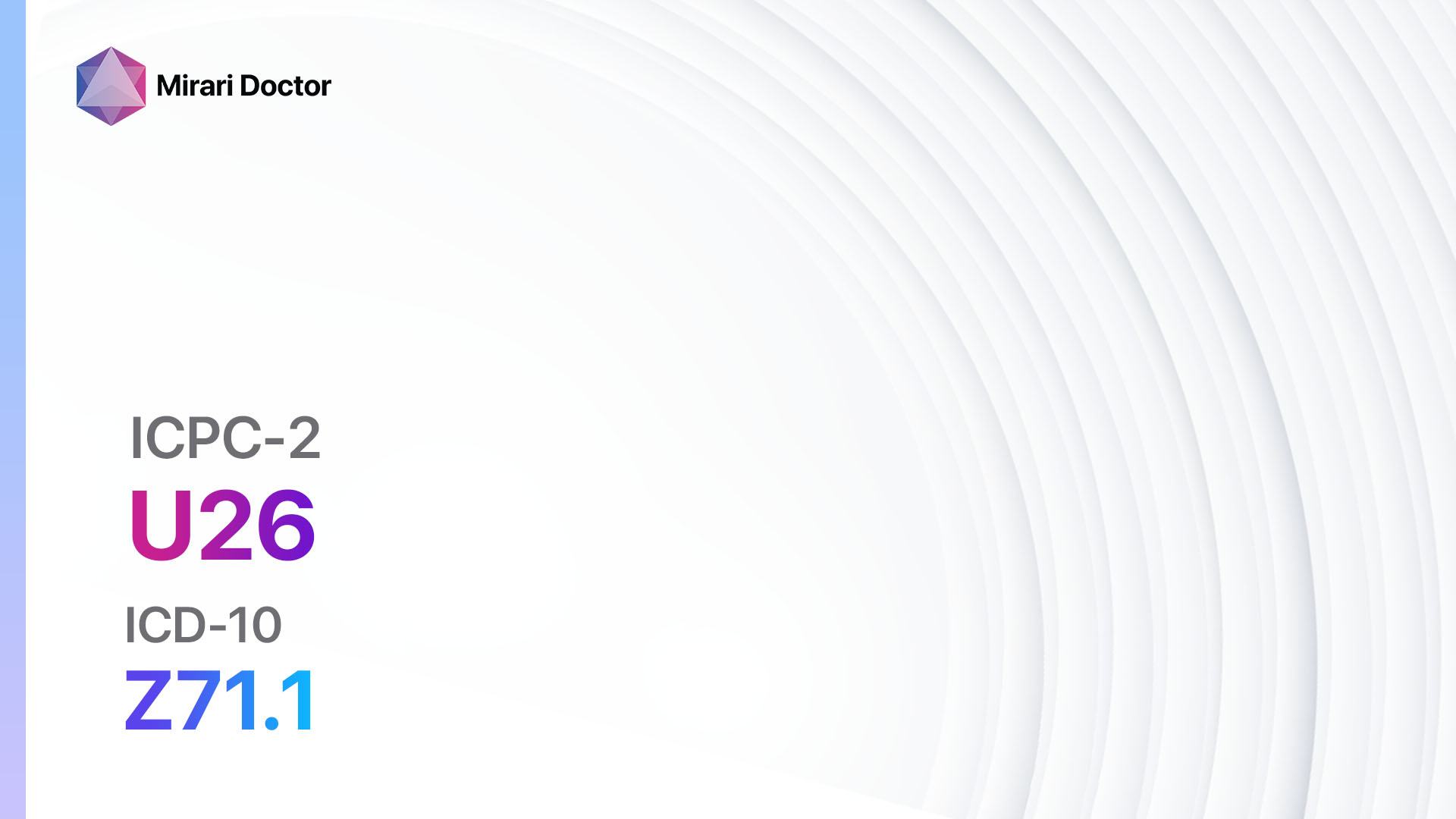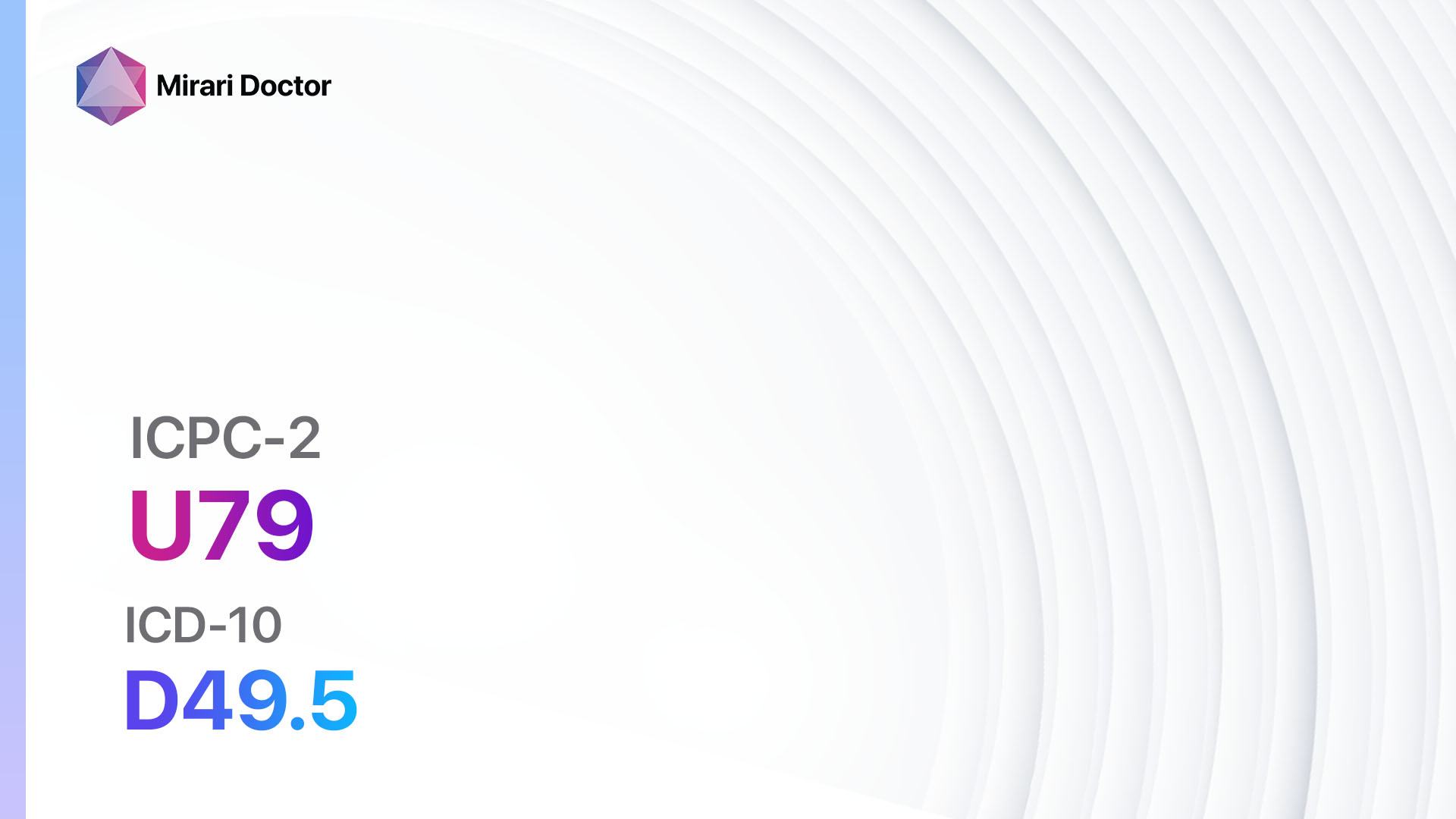
Introduction
Neoplasm of the urinary tract refers to the abnormal growth of cells in the urinary system, which includes the kidneys, bladder, ureters, and urethra[1]. This condition is significant as it can lead to various complications and affect the overall functioning of the urinary system. The aim of this guide is to provide a comprehensive overview of the diagnostic steps, possible interventions, and lifestyle modifications for neoplasm of the urinary tract.
Codes
- ICPC-2 Code: U79 Neoplasm urinary tract NOS[2]
- ICD-10 Code: D49.5 Neoplasm of unspecified behavior of other genitourinary organs[3]
Symptoms
- Hematuria: Presence of blood in the urine[4]
- Urinary frequency and urgency: Increased need to urinate and a sense of urgency[5]
- Pain or discomfort during urination
- Lower back pain or abdominal pain
- Fatigue and weight loss
The symptoms of neoplasm of the urinary tract may vary depending on the location and stage of the tumor[6].
Causes
The exact cause of neoplasm of the urinary tract is unknown, but several factors may increase the risk of developing this condition:
- Smoking
- Exposure to certain chemicals, such as aromatic amines and polycyclic aromatic hydrocarbons
- Chronic bladder inflammation or infections
- Family history of urinary tract cancers
- Certain genetic conditions, such as Lynch syndrome and hereditary nonpolyposis colorectal cancer (HNPCC)[7]
Diagnostic Steps
Medical History
- Gather information about the patient’s risk factors, such as smoking history, exposure to chemicals, and family history of urinary tract cancers.
- Inquire about any previous bladder infections or chronic bladder inflammation.
- Assess the presence and duration of symptoms, such as hematuria, urinary frequency, and pain during urination.
Physical Examination
- Perform a thorough physical examination, including a pelvic examination for women and a rectal examination for men.
- Palpate the abdomen to check for any masses or tenderness.
- Examine the lymph nodes in the groin and neck for any enlargement.
Laboratory Tests
- Urinalysis: Detect the presence of blood, abnormal cells, or infection in the urine[8].
- Urine cytology: Examine the urine sample under a microscope to identify abnormal cells.
- Complete blood count (CBC): Assess for anemia or infection.
- Kidney function tests: Measure the levels of creatinine and blood urea nitrogen (BUN) to evaluate kidney function.
Diagnostic Imaging
- Ultrasound: Non-invasive imaging technique to visualize the urinary tract and detect any abnormalities, such as tumors or kidney stones[9].
- Computed tomography (CT) scan: Provides detailed cross-sectional images of the urinary tract to identify tumors and evaluate their size and extent.
- Magnetic resonance imaging (MRI): Uses magnetic fields and radio waves to produce detailed images of the urinary tract, particularly useful for assessing the extent of the tumor and nearby structures.
- Cystoscopy: A thin, flexible tube with a camera is inserted into the urethra to visualize the bladder and urethra, allowing for direct visualization of any tumors or abnormalities.
Other Tests
- Biopsy: A sample of tissue is taken from the tumor for further examination under a microscope to confirm the diagnosis and determine the type and grade of the tumorstones[10].
- Molecular testing: Genetic testing of the tumor cells to identify specific genetic mutations that may guide treatment decisions.
- Staging tests: Depending on the extent of the tumor, additional tests such as bone scans, chest X-rays, or positron emission tomography (PET) scans may be performed to determine if the cancer has spread to other parts of the body.
Follow-up and Patient Education
- Schedule regular follow-up appointments to monitor the progress of the disease and assess the response to treatment.
- Provide education on self-care measures, such as maintaining a healthy lifestyle, managing symptoms, and recognizing signs of recurrence or complications.
Possible Interventions
Traditional Interventions
Medications:
Top 5 drugs for Neoplasm of the urinary tract:
- Chemotherapy (e.g., Cisplatin, Gemcitabine):
- Cost: Varies depending on the specific drug and treatment regimen.
- Contraindications: Severe kidney or liver disease, hearing loss, pregnancy.
- Side effects: Nausea, vomiting, hair loss, fatigue.
- Severe side effects: Kidney damage, bone marrow suppression, neuropathy.
- Drug interactions: Many potential drug interactions, including other chemotherapy drugs.
- Warning: Regular monitoring of kidney function and blood counts required.
- Immunotherapy (e.g., Pembrolizumab, Atezolizumab):
- Cost: Varies depending on the specific drug and treatment regimen.
- Contraindications: Severe autoimmune disease, pregnancy.
- Side effects: Fatigue, rash, diarrhea.
- Severe side effects: Immune-related adverse events, such as pneumonitis or colitis.
- Drug interactions: Limited drug interactions reported.
- Warning: Regular monitoring for immune-related adverse events required.
- Targeted therapy (e.g., Pazopanib, Cabozantinib):
- Cost: Varies depending on the specific drug and treatment regimen.
- Contraindications: Severe liver disease, pregnancy.
- Side effects: Fatigue, diarrhea, hypertension.
- Severe side effects: Liver toxicity, bleeding, heart problems.
- Drug interactions: Many potential drug interactions, including other targeted therapy drugs.
- Warning: Regular monitoring of liver function and blood pressure required.
- Radiation therapy:
- Cost: Varies depending on the specific treatment regimen and duration.
- Contraindications: Pregnancy, certain genetic conditions.
- Side effects: Fatigue, skin changes, urinary problems.
- Severe side effects: Radiation-induced cystitis, bowel problems.
- Drug interactions: Limited drug interactions reported.
- Warning: Regular monitoring for radiation-related side effects required.
- Hormone therapy (e.g., Tamoxifen, Leuprolide):
- Cost: Varies depending on the specific drug and treatment regimen.
- Contraindications: Pregnancy, certain hormone-sensitive conditions.
- Side effects: Hot flashes, fatigue, mood changes.
- Severe side effects: Increased risk of blood clots, bone loss.
- Drug interactions: Many potential drug interactions, including other hormone therapy drugs.
- Warning: Regular monitoring for hormone-related side effects required.
Alternative Drugs:
- Herbal supplements: Some herbal supplements, such as green tea extract or turmeric, may have potential benefits in reducing inflammation and supporting overall health. Cost: Varies depending on the specific supplement.
- Vitamin and mineral supplements: Certain vitamins and minerals, such as vitamin C or selenium, may have antioxidant properties that can support the immune system. Cost: Varies depending on the specific supplement.
- Pain medications: Nonsteroidal anti-inflammatory drugs (NSAIDs) or opioids may be prescribed to manage pain associated with the tumor. Cost: Varies depending on the specific medication and dosage.
Surgical Procedures:
- Transurethral resection of bladder tumor (TURBT): A surgical procedure to remove the tumor from the bladder using a cystoscope. Cost: $10,000 to $30,000.
- Partial or radical nephrectomy: Surgical removal of part or all of the kidney containing the tumor. Cost: $20,000 to $60,000.
- Cystectomy: Surgical removal of the bladder, often followed by the creation of a new way to store and pass urine. Cost: $50,000 to $100,000.
- Ureterectomy: Surgical removal of the affected ureter. Cost: $10,000 to $30,000.
- Urinary diversion: Surgical creation of a new way for urine to leave the body after bladder removal. Cost: $50,000 to $100,000.
Alternative Interventions
- Acupuncture: May help manage pain and improve overall well-being. Cost: $60-$120 per session.
- Herbal supplements: Certain herbs, such as saw palmetto or cranberry extract, may have potential benefits in supporting urinary tract health. Cost: Varies depending on the specific supplement.
- Mind-body techniques: Practices such as meditation, yoga, or tai chi may help reduce stress and improve quality of life. Cost: Varies depending on the specific practice and location.
- Dietary modifications: A healthy diet rich in fruits, vegetables, whole grains, and lean proteins may support overall health and immune function. Cost: Varies depending on individual food choices.
- Exercise: Regular physical activity can help improve strength, reduce fatigue, and enhance overall well-being. Cost: Varies depending on individual preferences and access to exercise facilities.
Lifestyle Interventions
- Smoking cessation: Quitting smoking is crucial to reduce the risk of developing or worsening neoplasm of the urinary tract. Cost: Varies depending on the chosen smoking cessation method.
- Healthy diet: Encourage a balanced diet rich in fruits, vegetables, whole grains, and lean proteins to support overall health and immune function. Cost: Varies depending on individual food choices.
- Regular exercise: Engaging in regular physical activity can improve overall well-being and support immune function. Cost: Varies depending on individual preferences and access to exercise facilities.
- Stress management: Encourage stress-reducing techniques such as meditation, deep breathing exercises, or engaging in hobbies. Cost: Varies depending on the chosen stress management method.
- Hydration: Drinking an adequate amount of water can help maintain urinary tract health. Cost: Minimal.
It is important to note that the cost ranges provided are approximate and may vary depending on the location and availability of the interventions. It is recommended to consult with healthcare professionals for personalized treatment options and cost estimates.
Mirari Cold Plasma Alternative Intervention
Understanding Mirari Cold Plasma
- Safe and Non-Invasive Treatment: Mirari Cold Plasma is a safe and non-invasive treatment option for various skin conditions. It does not require incisions, minimizing the risk of scarring, bleeding, or tissue damage.
- Efficient Extraction of Foreign Bodies: Mirari Cold Plasma facilitates the removal of foreign bodies from the skin by degrading and dissociating organic matter, allowing easier access and extraction.
- Pain Reduction and Comfort: Mirari Cold Plasma has a local analgesic effect, providing pain relief during the treatment, making it more comfortable for the patient.
- Reduced Risk of Infection: Mirari Cold Plasma has antimicrobial properties, effectively killing bacteria and reducing the risk of infection.
- Accelerated Healing and Minimal Scarring: Mirari Cold Plasma stimulates wound healing and tissue regeneration, reducing healing time and minimizing the formation of scars.
Mirari Cold Plasma Prescription
Video instructions for using Mirari Cold Plasma Device – U79 Neoplasm urinary tract NOS (ICD-10:D49.5)
| Mild | Moderate | Severe |
| Mode setting: 1 (Infection) Location: 0 (Localized) Morning: 15 minutes, Evening: 15 minutes |
Mode setting: 1 (Infection) Location: 0 (Localized) Morning: 30 minutes, Lunch: 30 minutes, Evening: 30 minutes |
Mode setting: 1 (Infection) Location: 0 (Localized) Morning: 30 minutes, Lunch: 30 minutes, Evening: 30 minutes |
| Mode setting: 6 (Liver/Kidney Therapy) Location: 2 (Prostate & Uterus) Morning: 15 minutes, Evening: 15 minutes |
Mode setting: 6 (Liver/Kidney Therapy) Location: 2 (Prostate & Uterus) Morning: 30 minutes, Lunch: 30 minutes, Evening: 30 minutes |
Mode setting: 6 (Liver/Kidney Therapy) Location: 2 (Prostate & Uterus) Morning: 30 minutes, Lunch: 30 minutes, Evening: 30 minutes |
| Mode setting: 6 (Liver/Kidney Therapy) Location: 2 (Prostate & Uterus) Morning: 15 minutes, Evening: 15 minutes |
Mode setting: 6 (Liver/Kidney Therapy) Location: 2 (Prostate & Uterus) Morning: 30 minutes, Lunch: 30 minutes, Evening: 30 minutes |
Mode setting: 6 (Liver/Kidney Therapy) Location: 2 (Prostate & Uterus) Morning: 30 minutes, Lunch: 30 minutes, Evening: 30 minutes |
| Mode setting: 7 (Immunotherapy) Location: 1 (Sacrum) Morning: 15 minutes, Evening: 15 minutes |
Mode setting: 7 (Immunotherapy) Location: 1 (Sacrum) Morning: 30 minutes, Lunch: 30 minutes, Evening: 30 minutes |
Mode setting: 7 (Immunotherapy) Location: 1 (Sacrum) Morning: 30 minutes, Lunch: 30 minutes, Evening: 30 minutes |
| Total Morning: 60 minutes approx. $10 USD, Evening: 60 minutes approx. $10 USD |
Total Morning: 120 minutes approx. $20 USD, Lunch: 120 minutes approx. $20 USD, Evening: 120 minutes approx. $20 USD, |
Total Morning: 120 minutes approx. $20 USD, Lunch: 120 minutes approx. $20 USD, Evening: 120 minutes approx. $20 USD, |
| Usual treatment for 7-60 days approx. $140 USD – $1200 USD | Usual treatment for 6-8 weeks approx. $2,520 USD – $3,360 USD |
Usual treatment for 3-6 months approx. $5,400 USD – $10,800 USD
|
 |
|
Use the Mirari Cold Plasma device to treat Neoplasm urinary tract NOS effectively.
WARNING: MIRARI COLD PLASMA IS DESIGNED FOR THE HUMAN BODY WITHOUT ANY ARTIFICIAL OR THIRD PARTY PRODUCTS. USE OF OTHER PRODUCTS IN COMBINATION WITH MIRARI COLD PLASMA MAY CAUSE UNPREDICTABLE EFFECTS, HARM OR INJURY. PLEASE CONSULT A MEDICAL PROFESSIONAL BEFORE COMBINING ANY OTHER PRODUCTS WITH USE OF MIRARI.
Step 1: Cleanse the Skin
- Start by cleaning the affected area of the skin with a gentle cleanser or mild soap and water. Gently pat the area dry with a clean towel.
Step 2: Prepare the Mirari Cold Plasma device
- Ensure that the Mirari Cold Plasma device is fully charged or has fresh batteries as per the manufacturer’s instructions. Make sure the device is clean and in good working condition.
- Switch on the Mirari device using the power button or by following the specific instructions provided with the device.
- Some Mirari devices may have adjustable settings for intensity or treatment duration. Follow the manufacturer’s instructions to select the appropriate settings based on your needs and the recommended guidelines.
Step 3: Apply the Device
- Place the Mirari device in direct contact with the affected area of the skin. Gently glide or hold the device over the skin surface, ensuring even coverage of the area experiencing.
- Slowly move the Mirari device in a circular motion or follow a specific pattern as indicated in the user manual. This helps ensure thorough treatment coverage.
Step 4: Monitor and Assess:
- Keep track of your progress and evaluate the effectiveness of the Mirari device in managing your Neoplasm urinary tract NOS. If you have any concerns or notice any adverse reactions, consult with your health care professional.
Note
This guide is for informational purposes only and should not replace the advice of a medical professional. Always consult with your healthcare provider or a qualified medical professional for personal advice, diagnosis, or treatment. Do not solely rely on the information presented here for decisions about your health. Use of this information is at your own risk. The authors of this guide, nor any associated entities or platforms, are not responsible for any potential adverse effects or outcomes based on the content.
Mirari Cold Plasma System Disclaimer
- Purpose: The Mirari Cold Plasma System is a Class 2 medical device designed for use by trained healthcare professionals. It is registered for use in Thailand and Vietnam. It is not intended for use outside of these locations.
- Informational Use: The content and information provided with the device are for educational and informational purposes only. They are not a substitute for professional medical advice or care.
- Variable Outcomes: While the device is approved for specific uses, individual outcomes can differ. We do not assert or guarantee specific medical outcomes.
- Consultation: Prior to utilizing the device or making decisions based on its content, it is essential to consult with a Certified Mirari Tele-Therapist and your medical healthcare provider regarding specific protocols.
- Liability: By using this device, users are acknowledging and accepting all potential risks. Neither the manufacturer nor the distributor will be held accountable for any adverse reactions, injuries, or damages stemming from its use.
- Geographical Availability: This device has received approval for designated purposes by the Thai and Vietnam FDA. As of now, outside of Thailand and Vietnam, the Mirari Cold Plasma System is not available for purchase or use.
References
- Yaxley JP. Urinary tract cancers: An overview for general practice. Aust Fam Physician. 2016;45(9):628-632.
- ICPC-2 – English. https://www.gesy.org.cy/el-gr/annualreport/icpc-2-english1-10.pdf. Accessed June 28, 2024.
- 2024 ICD-10-CM Diagnosis Code D49.5: Neoplasm of unspecified behavior of other genitourinary organs. https://www.icd10data.com/ICD10CM/Codes/C00-D49/D49-D49/D49-/D49.5. Accessed June 28, 2024.
- American Cancer Society. Bladder Cancer Signs and Symptoms. https://www.cancer.org/cancer/types/bladder-cancer/detection-diagnosis-staging/signs-and-symptoms.html. Accessed June 28, 2024.
- Mayo Clinic. Bladder cancer – Symptoms and causes. https://www.mayoclinic.org/diseases-conditions/bladder-cancer/symptoms-causes/syc-20356104. Accessed June 28, 2024.
- National Cancer Institute. Bladder Cancer Symptoms. https://www.cancer.gov/types/bladder/symptoms. Accessed June 28, 2024.
- American Cancer Society. Bladder Cancer Risk Factors. https://www.cancer.org/cancer/bladder-cancer/causes-risks-prevention/risk-factors.html. Accessed June 28, 2024.
- Johns Hopkins Medicine. Bladder Cancer Screening and Diagnosis. https://www.hopkinsmedicine.org/health/conditions-and-diseases/bladder-cancer/bladder-cancer-screening-and-diagnosis. Accessed June 28, 2024.
- Vinmec. The role of ultrasound in the diagnosis of bladder tumors. https://www.vinmec.com/en/news/health-news/general-health-check/the-role-of-ultrasound-in-the-diagnosis-of-bladder-tumors/. Accessed June 28, 2024.
- Higgins, Jennifer A ; Zainol, Murizal ; Brown, Karen ; Jones, George D D (2014.0). Anthocyans as tertiary chemopreventive agents in bladder cancer: anti-oxidant mechanisms and interaction with mitomycin C. DOI: 10.1093/mutage/geu009
Related articles
Made in USA






